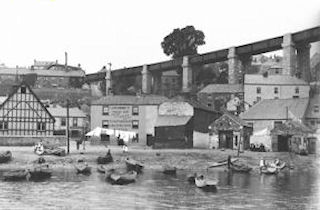Old Photographs
Two postcards from the early 1900s:


Waterside as it was until re-development in the 1960s:



The old Passage House Inn, and Tamar Street as it was:


Aerial photos taken in the 1980s:


page updated 2025-02-08
